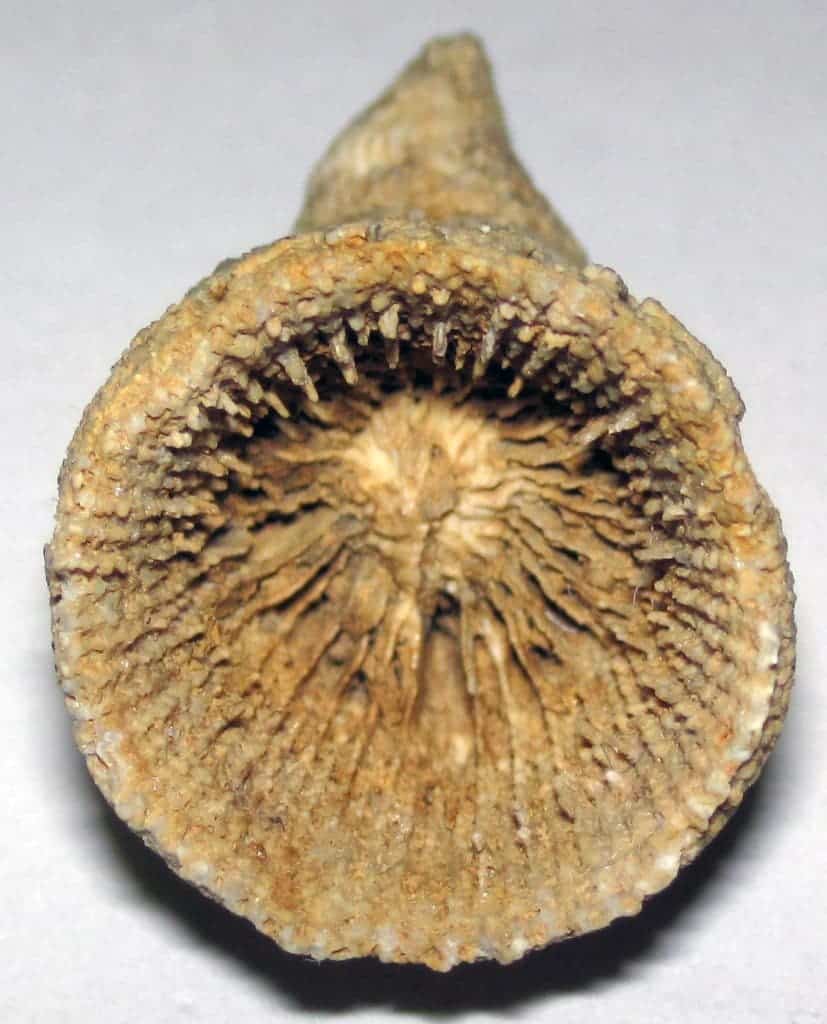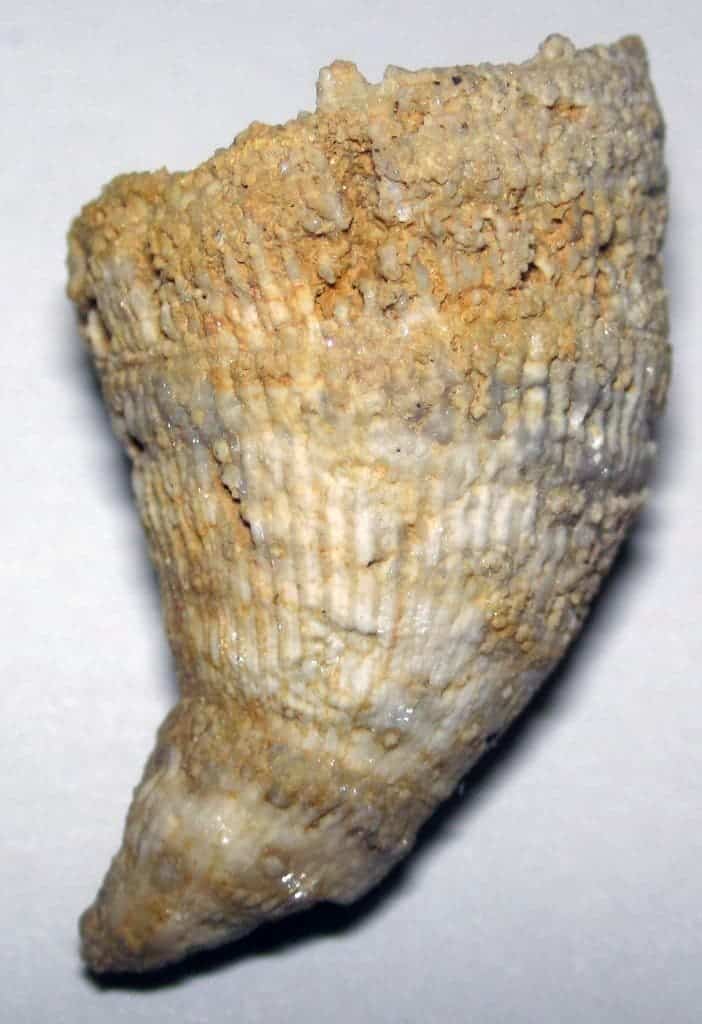
Zaphrentis phrygia
Image credits to flickr user James St. John
Kinda looks like the Sarlacc, doesn’t it? Well take your geek hat off cause it isn’t a Sarlacc. Now put your paleontology geek hats on because this is Fossil Friday and we’re talking about Zaphrentis phrygia.
Part of the prehistoric hexacoral family Zaphrentidae, this Z. phrygia specimen lived in the Middle Devonian, some 419 to 359 million years ago. Zaphrentis were solitary rugose (horn shaped) corals with calcitic skeletons. In the middle of the “cup” a single polyp (the animal that builds the coral) lived, feeding by filtering seawater for nutrients. The cone is 1.5 cm (0.196 inches) in diameter at its widest.
This fossil was found in the Jeffersonville Limestone, on the northern shore of the Ohio river. Part of fossils in this layer of rock (including the specimen pictured here) are silicified — meaning that the original carbonate material of the shell has been replaced with silica or quartz. Silica is much more resistant to weathering than the limestone formed by these reefs, so the fossils just stand out from the rock or are eroded completely free from it, as was the case with this specimen.

Image credits to flickr user James St. John









